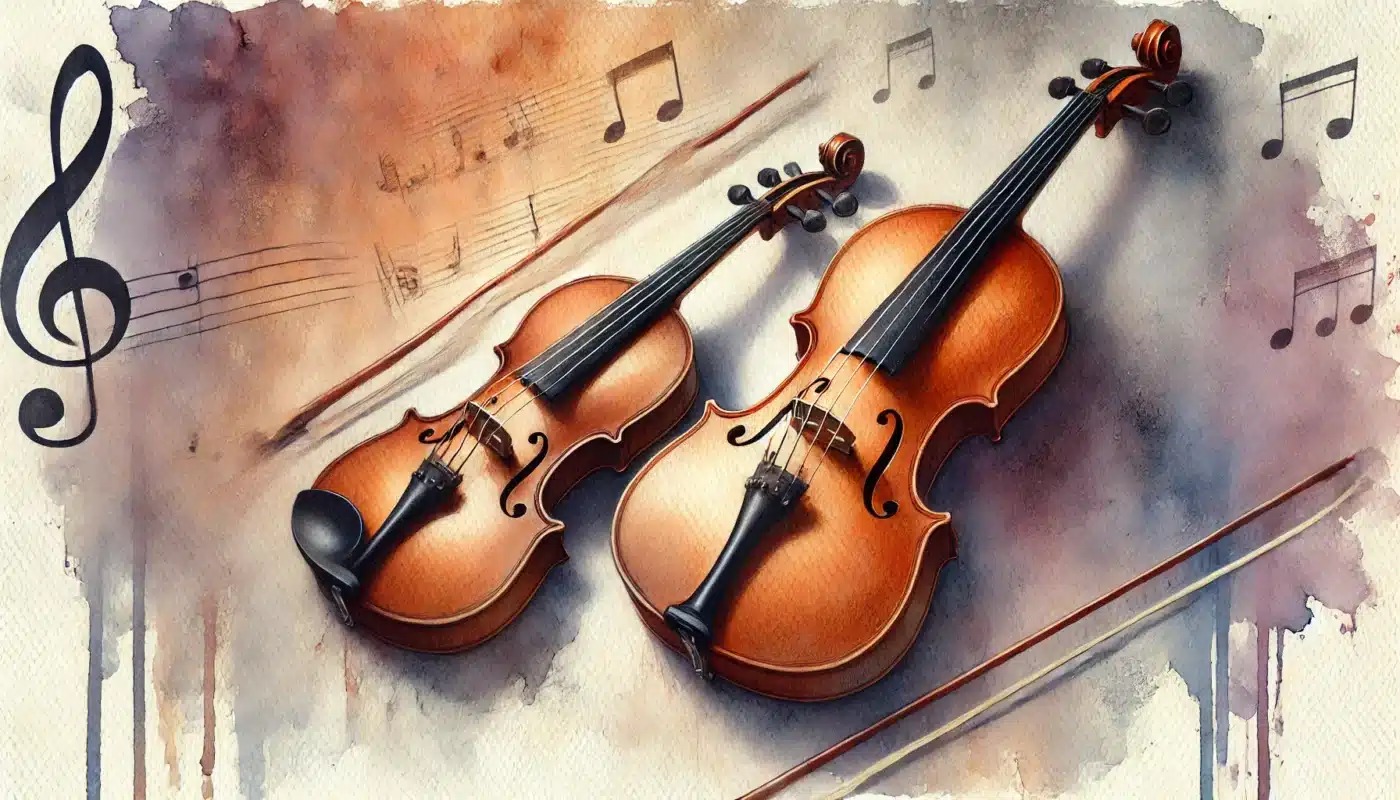When deciding between the violin and the viola, many musicians and enthusiasts find themselves comparing these two string instruments to determine which one suits their needs best.
While these instruments share similarities, they also have distinct differences that can influence a player’s experience and musical journey. Understanding these key differences can help you make an informed choice about which instrument to play or appreciate more deeply.
Viola vs Violin: Key Differences Explained
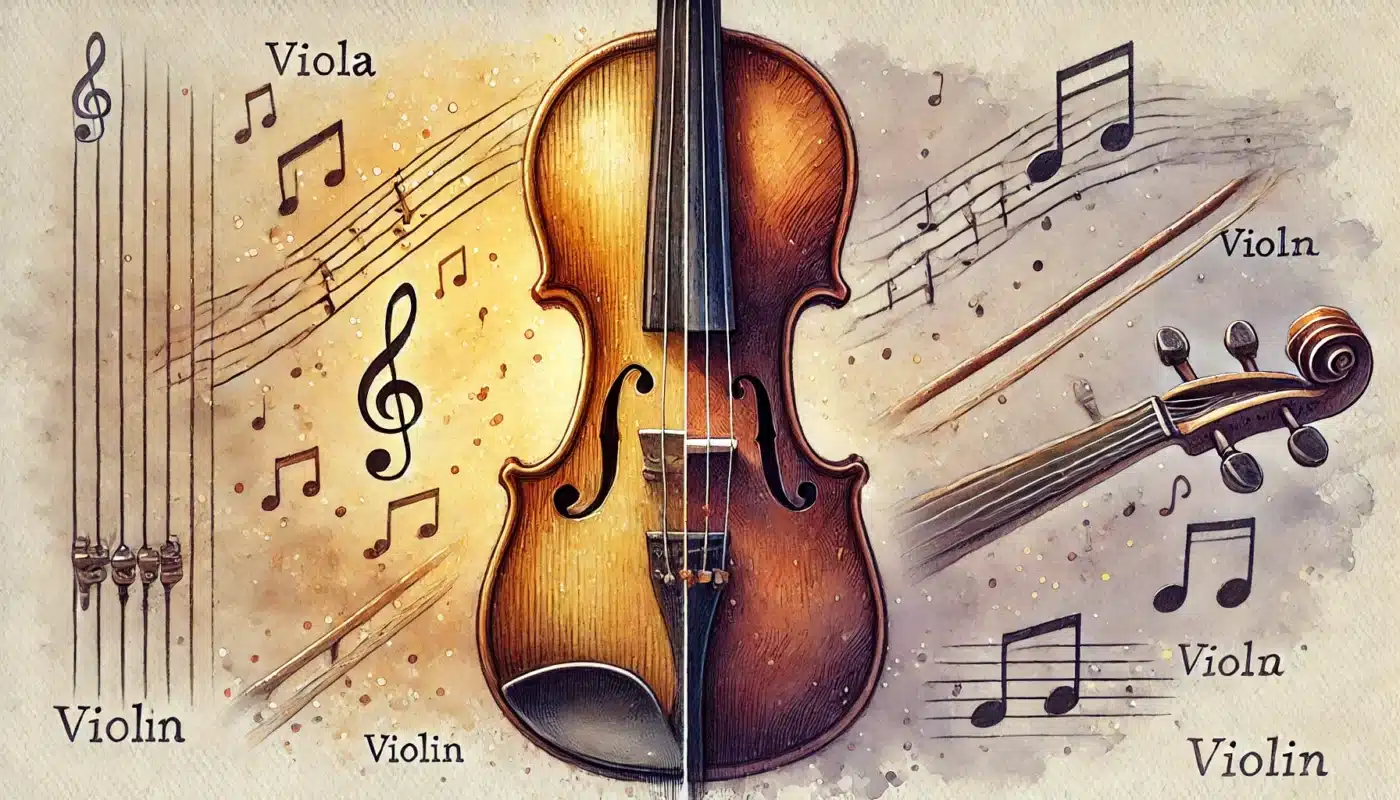
When diving deeper into the viola vs. violin discussion, several factors set these two instruments apart, making each one special in its own right. Let’s explore these differences in more detail to help you better understand what makes each instrument unique.
Let’s start with the violin. Known as the highest-pitched instrument in the bowed string family, the violin is often the star of the show. In an orchestra or chamber music setting, it usually carries the main melody. If you love the idea of playing the lead, tackling fast-paced pieces, and hitting those high, sweet notes, the violin might be your instrument of choice. Plus, violins tend to be more prominent in various genres, from classical to folk to pop.
But don’t count out the viola just yet. This slightly larger string instrument has its own unique charm. The viola plays the alto voice in the ensemble, often filling in the harmonies that make the music feel full and rich. Its deeper tone and slightly heavier bow give it a sound that’s warm and mellow, perfect for those who prefer to add depth to the music rather than take center stage.
While the violin might grab attention with its bright and crisp tone, the viola wins hearts with its soulful, warmer tone. In fact, many musicians appreciate the balance the viola brings to a piece of music. And let’s be honest, there’s something special about playing an instrument that’s often seen as the unsung hero of the string instrument family.
In the end, the choice between violin and viola comes down to what kind of musical journey you want to embark on. Whether you’re drawn to the bright melodies of the violin or the rich harmonies of the viola, both offer rewarding experiences for those willing to dive in.
Viola Strings vs. Violin Strings: Understanding the Differences
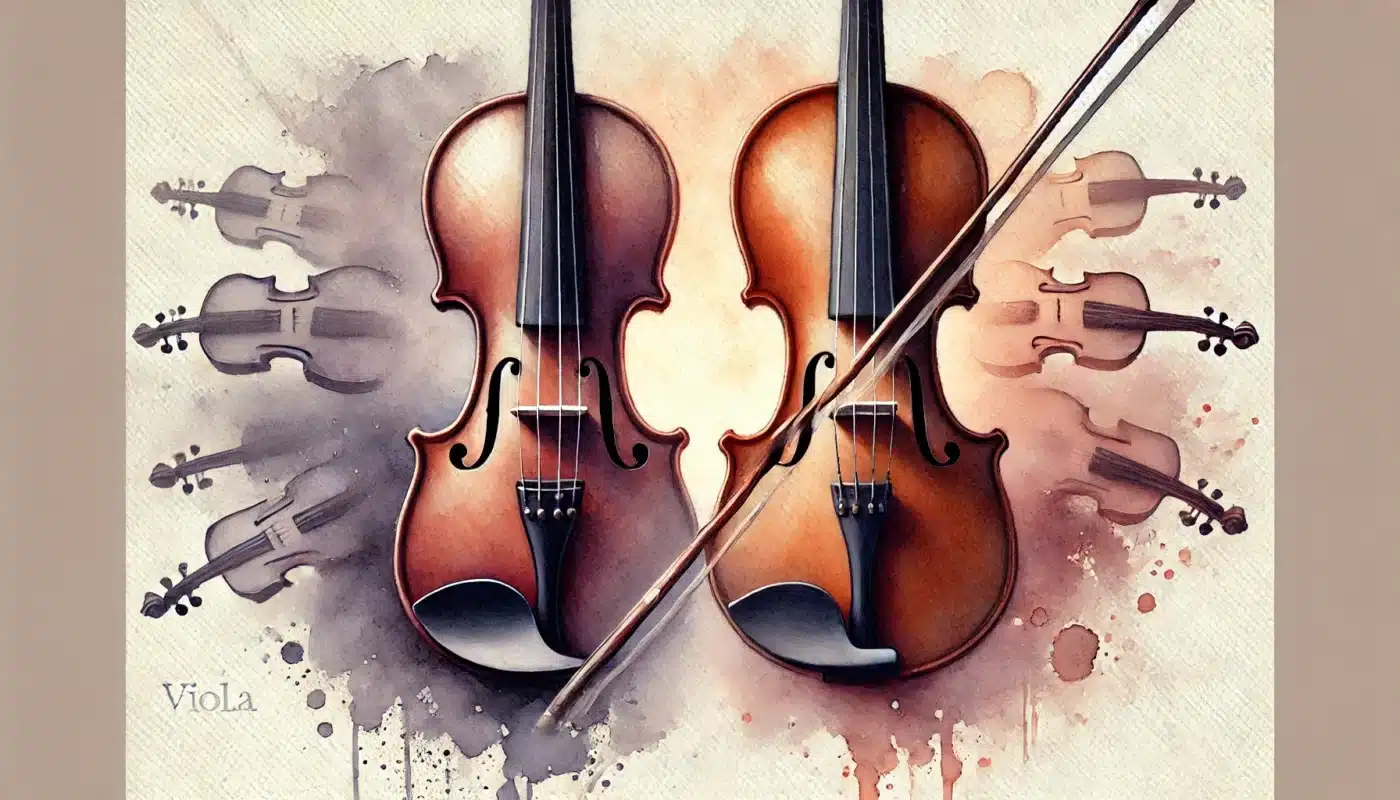
One of the most noticeable differences between the viola and violin lies in their strings. Although these two instruments belong to the same string instrument family, the strings they use and the sound they produce are distinct.
Viola Strings: Rich and Resonant
The viola strings are thicker and longer than those of a violin, which contributes to the viola’s deeper tone and warm sound. These strings are typically tuned to C-G-D-A, starting from the lowest pitch (the C string). This tuning gives the viola its characteristic mellow and resonant sound, making it ideal for playing harmonies and adding depth to ensemble music.
Because of the thicker strings, playing the viola requires a bit more pressure and a slightly different bowing technique compared to the violin. The viola’s bow is also heavier to help bring out the rich sound of the larger strings. This combination of thicker strings and a heavier bow creates a sound that is both powerful and smooth, perfect for filling in the middle range of an orchestra or chamber music group.
Violin Strings: Bright and Brilliant
On the other hand, violin strings are tuned to G-D-A-E, with the E string being the highest-pitched of the set. This tuning gives the violin its bright, crisp tone and allows it to play the main melody in many pieces of music.
Since the violin strings are thinner and shorter than viola strings, they produce a higher pitch and a more piercing sound that can cut through the texture of a full orchestra. The violin’s lighter bow complements these strings, making it easier to play fast passages and achieve the delicate, nuanced sound that the instrument is known for.
Choosing Between Viola and Violin Strings
Whether you prefer the warmer tone of viola strings or the brilliant sound of violin strings depends on your musical goals and personal taste. The choice of strings plays a significant role in defining the overall character of the instrument, so it’s worth considering which sound appeals to you more as you explore the world of stringed instruments.
Understanding Clefs: Alto Clef vs. Treble Clef
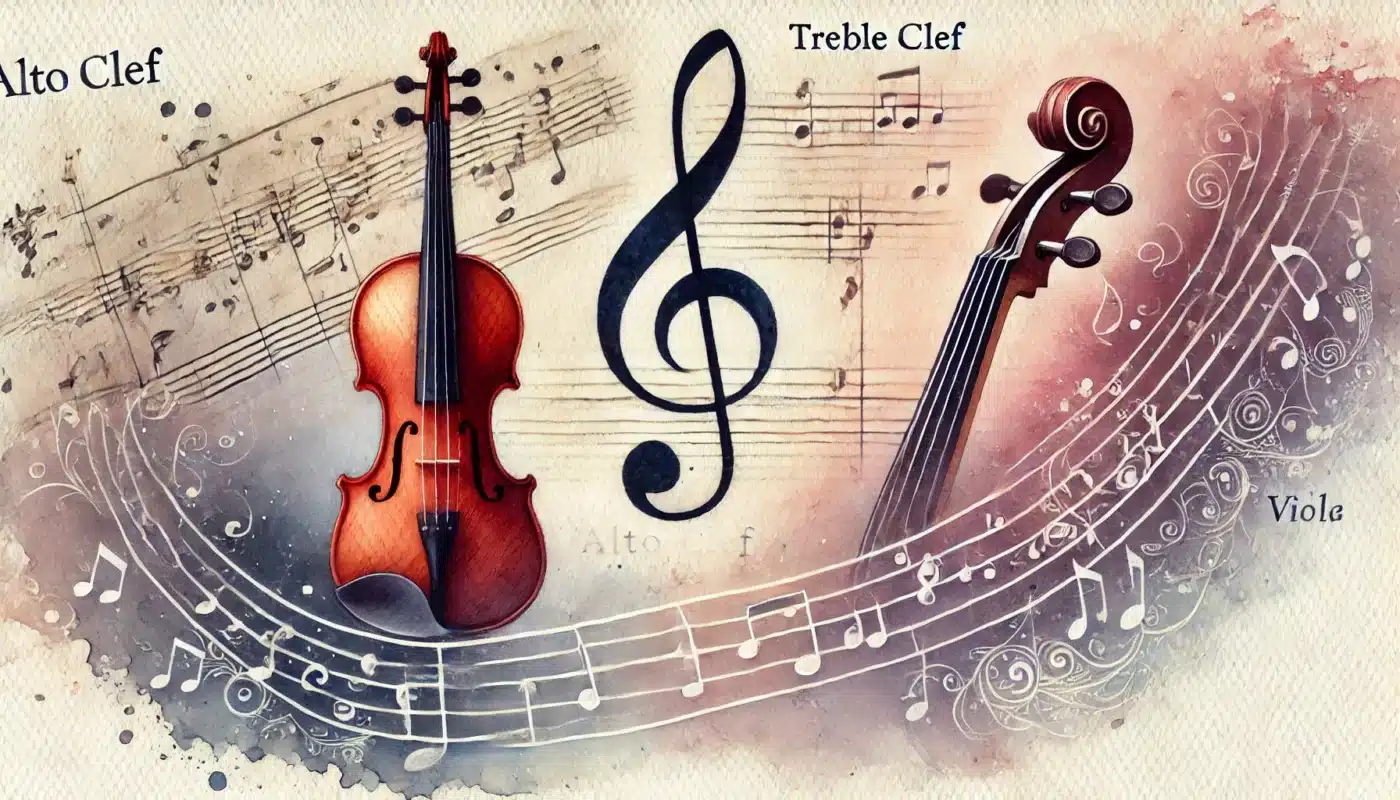
One of the key differences between playing the viola and the violin is the type of clef each instrument uses for reading sheet music. While this might seem like a technical detail, it significantly influences how musicians approach these instruments.
Alto Clef: The Viola’s Unique Voice
The alto clef, also known as the C clef, is primarily used by the viola. In this clef, middle C is placed on the center line of the staff. This placement perfectly suits the viola’s range, which lies between the violin and the cello.
Learning to read the alto clef can be a challenge, especially for those who are more familiar with the treble clef used by many other instruments. However, once mastered, it opens up a unique repertoire of music that is specifically written for the viola’s deeper tone.
Because the viola is the only instrument that regularly uses the alto clef as its primary clef, playing the viola gives musicians a distinct identity in the world of string instruments. This clef is essential for accurately reading and performing the wide range of music written for the viola, from classical pieces to contemporary works.
Treble Clef: The Violin’s Familiar Territory
The treble clef, or G clef, is used by the violin and is familiar to many musicians across various instruments. The treble clef represents higher pitches, which aligns perfectly with the violin’s highest-pitched range.
For musicians who already read the treble clef, transitioning to the violin can feel more intuitive. This clef is widely used not just in violin music but also for other instruments like the flute, clarinet, and even high vocal parts in choral music.
Transitioning Between Clefs
For violinists who decide to play viola, one of the biggest adjustments is learning to read the alto clef. While the transition is entirely manageable, it does require practice and a shift in how notes are visualized on the staff.
Conversely, viola players who take up the violin will need to adapt to the treble clef. Understanding both clefs can enhance a musician’s versatility and open up more opportunities in various musical settings, from orchestral performances to chamber music ensembles.
The choice between alto clef and treble clef is more than just a technicality—it’s part of what defines the unique experience of playing the violin or the viola.
Viola Bow vs. Violin Bow: Weight, Technique, and Impact on Sound
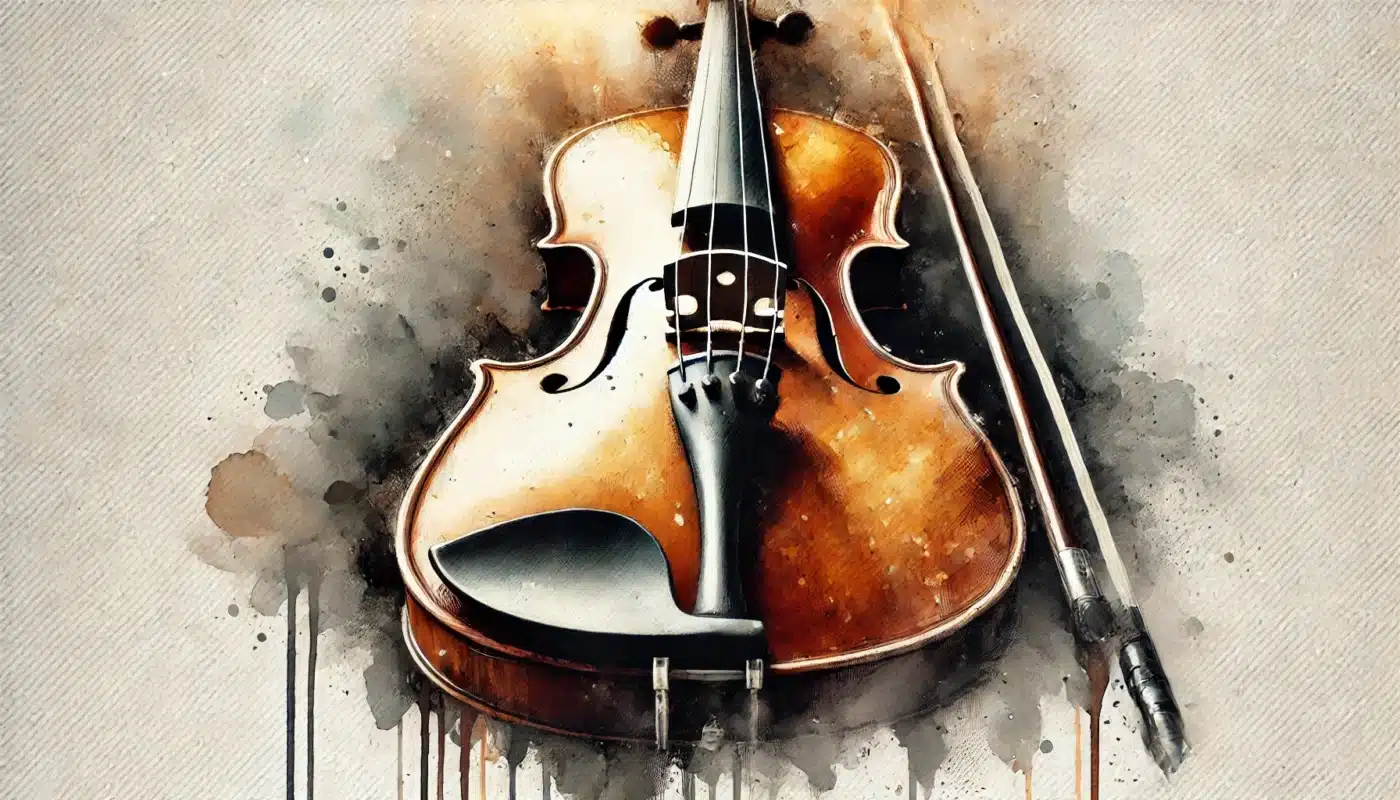
When comparing the viola and the violin, it’s essential to consider the role of the bow. The viola bow and violin bow may look similar at first glance, but they are designed differently to suit the unique characteristics of each instrument.
Viola Bow: Heavier and Designed for Depth
The viola bow is typically heavier and slightly thicker than the violin bow. This added weight helps produce the warmer tone that the viola is known for, allowing players to bring out the rich, resonant sound of the thicker strings. The extra heft of the bow requires players to use a bit more pressure when bowing, which contributes to the instrument’s full-bodied sound.
The viola’s bow is also designed to handle the larger size and lower pitch of the instrument. Because the viola produces deeper notes, the bow needs to be robust enough to draw out these tones effectively, especially when playing in the lower register.
Violin Bow: Lighter and Made for Agility
In contrast, the violin bow is lighter and more agile, reflecting the violin’s role as the highest-pitched instrument in the bowed string family. This lighter weight allows violinists to execute quick, intricate passages with ease, maintaining the instrument’s characteristic crisp tone.
The lighter bow is essential for the violin’s versatility, whether it’s leading a symphony with fast, bright notes or playing delicate, sustained melodies. The violin bow needs to be responsive, helping violinists achieve the precise articulation required for the instrument’s wide range of music.
How the Bow Affects Playing Style
The difference in bow weight between the viola and the violin significantly impacts the player’s technique. Viola players often develop a slightly different bowing style, using more arm weight and slower bow strokes to fully engage the larger strings and produce the desired sound.
On the other hand, violinists tend to use faster, lighter bow strokes to navigate the violin strings effectively. The lighter violin bow makes it easier to achieve the quick bow changes and delicate dynamics that the instrument’s music often demands.
Choosing the Right Bow for Your Instrument
If you play both the violin and the viola, you’ll likely need to adjust your technique depending on which bow you’re using. Each bow is crafted to complement the specific qualities of its instrument, ensuring that players can achieve the best sound possible.
Whether you prefer the heavier, more substantial feel of the viola bow or the nimble, light touch of the violin bow, understanding these differences can help you make an informed choice when selecting or switching between these string instruments.
Viola vs. Violin: Frequently Asked Questions
Which is easier to play: Violin or Viola?
The answer depends on what you’re looking for in an instrument. The violin is often seen as more technically demanding due to its role in leading the melody and playing higher-pitched, fast-paced music. The viola, with its thicker strings and heavier bow, can be more physically demanding, but many find it more forgiving in terms of bowing technique. Ultimately, the ease of playing either instrument comes down to personal preference and the type of music you enjoy.
What are the 5 main differences between a violin and a viola?
- Size and Shape: The viola is slightly larger than the violin, with a typical back length of 15 to 18 inches, compared to the violin’s 14 inches.
- Strings and Tuning: Violin strings are tuned to G-D-A-E, while viola strings are tuned to C-G-D-A, giving the viola a deeper tone.
- Clef: The violin uses the treble clef (G clef), while the viola primarily uses the alto clef (C clef), making the sheet music different for each.
- Bow Differences: The viola bow is heavier and thicker than the violin bow, helping to produce the viola’s warmer, richer sound.
- Role in Music: The violin often plays the main melody in orchestral settings, while the viola typically supports with harmonic lines and depth.
Why would someone choose to play the viola instead of the violin?
Many musicians are drawn to the viola for its warmer tone and the unique, supportive role it plays in music. The viola’s rich sound adds depth and harmony in ensembles, which some players find more fulfilling than the leading, often higher-pitched role of the violin. Additionally, there’s less competition in the viola section, which can offer more opportunities in orchestral settings.
Can you play viola if you already play violin?
Yes, many violinists can transition to the viola fairly easily since the two instruments share similar techniques and fingerings. However, violinists will need to adjust to reading the alto clef and using a heavier bow. Many musicians find that learning both instruments enhances their overall understanding of the bowed string family and opens up more opportunities for playing music in various ensembles.
How do violin bows differ from viola bows?
Violin bows are generally lighter and more agile than viola bows. This lighter weight makes it easier for violinists to perform fast, intricate passages, which is crucial for producing the violin’s bright, soprano voice in an ensemble.
In contrast, viola bows are slightly heavier and thicker, designed to complement the viola’s larger size and thicker strings. The added weight of a viola bow helps create the instrument’s rich, warmer tone, allowing it to provide depth and harmony in orchestral and chamber music settings.
Join Our Team of Wedding Violinists Across the UK
If you’re passionate about playing the violin and love bringing music to life at weddings, we’d love to connect with you! Whether you’re an experienced violinist or looking to expand your performance opportunities, we welcome skilled musicians to join our team and create unforgettable moments at weddings across the UK.
To learn more about joining us and to get in touch, visit our website at https://weddingviolinist.uk/
We look forward to hearing from you!

